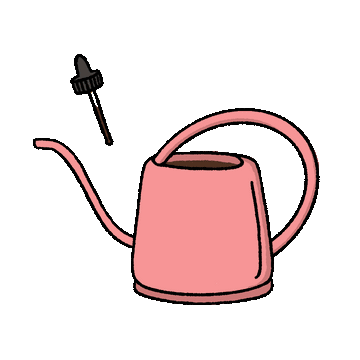Anyone else remember how in demand these guy were a few years back? As the Pilea peperomioides started to spread across our instagram feeds, the demand for this little guy was insatiable. And the prices reflected it - we can remember seeing 130mm plants going for as much as $60 - today you're looking at around a quarter of that.
So why the enthusiasm? Easy to propagate, an interesting habit, and then those leaves - Little pancakes floating around a central stem. We can't help being fans.
Care
Light
Pileas love bright, indirect light. If you can give them a few hours of morning Sun they'll be cheering but avoid direct sun in the afternoon.
Water
Pileas prefer to dry out between drinks. Stick your finger in the potting media and make sure the top few centimeters are dry.
Fertiliser
Regular feeding with a liquid plant food (fortnightly while the plant is actively growing) will give you great results. If your plant is producing a lot of 'pups' (baby plants), or dropping leaves rapidly, a good fertiliser will be very beneficial.
Potting Media
A general indoor plant mix is perfect. These guys are fast growers and can double in size over a year. Consider potting up each season to encourage the rapd growth.
Problems
Most issues with the P. peperomioides are easy fixes once diagnosed.
Symptom |
Cause |
Solution |
| Lower leaves starting to yellow | Natural Leaf Drop | Do nothing - This is normal. If they are dropping rapidly increase the light and fertilise. |
| Whole plant yellowing | Too much sun or water | Reposition and/or allow to dry out between drinks |
| Brown Spots | Age or Fungal disease | If not uniformly coloured, it could be fungal. Simply pluck off the affected leaf or leaves. If it is unform in colour, its just an old leaf dying off |
| Leaf Curl (Outwards) | Lack of Light | Reposition |
| Leaf Curl (Inwards) | High heat | Reposition away from heatsource or reduce temperature |
| Leaf Curl then drop | Over-watering, maybe root rot | Dig up plant, gently prune and rotten roots, allow other roots to dry out. Repot in fresh potting mix. |
Hot Tips
- Flat leaves are best achieved by providing plenty of natural light and not rotating. Rotating the plant means the leaves are always stretching towards the light and will cause them to dome. Obviously not roating your plant will mean it looks very sparse on one side, but if you're desperate for those flat leaves this is the best option. Alternatively, place your Pilea under a grow light or, if you're lucky enough, a skylight. This way you won't have to rotate the plant allowing the leaves to flatten out.
- To get a tall, straight stem you will need a stake. As Pileas grow they naturally bow over with the weight. If you see a mature plant looking tall and straight, chances are its been staked.
- Pileas do not branch out from the main stem. Instead, they have 'pups' that grow out from a runner underneath the plant. To create a full looking plant, don't remove these pups and let them grow out. You could also achieve this look by planting more Pileas around the base of your plant.



Leave a comment